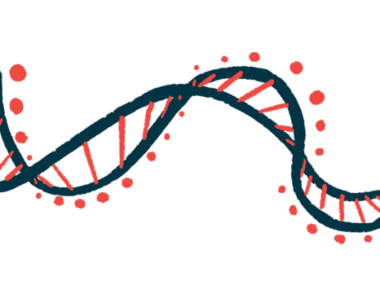Location of GJB1 gene mutations tied to CMTX1 severity: Study
Scores higher for cell-membrane-spanning regions of connexin-32 protein
Written by |

Mutations in the GJB1 gene affecting transmembrane, or cell membrane-spanning, regions of the connexin-32 protein are associated with more severe disease in people with X-linked Charcot-Marie-Tooth disease type 1 (CMTX1).
That’s according to a study in France, which also demonstrated that patients with mutations affecting other protein regions usually have milder symptoms. However, the specific type of mutation does not determine the severity of symptoms.
“Consequently, the genotype [genetic makeup] could play a prognostic role in addition to its diagnostic role,” researchers wrote. “It is crucial for upcoming clinical trials to account for the specific mutated protein domain, along with traditional factors such as age and sex, when creating comparison groups.”
The study, “Phenotype–genotype correlation in X-linked Charcot-Marie-Tooth disease: A French cohort study,” was published in the European Journal of Neurology.
Researchers focus on missense variants
Charcot-Marie-Tooth disease is a a group of diseases that affect the peripheral nervous system, the network of nerves that control movement and sensation in the limbs. Symptoms include muscle weakness, walking difficulties, and hearing loss.
CMTX1 is caused by mutations in the GJB1 gene, which is located in the X chromosome. That gene codes for a protein called connexin-32, which forms channels or gap junctions between Schwann cells. These specialized cells produce myelin, a protective layer around nerve fibers that helps them send electric signals more efficiently.
Although more than 400 variants of the GJB1 gene have been documented, “current data on genotype–phenotype correlations in CMTX1 are limited,” the researchers wrote. Phenotype refers to an individual’s observable traits.
To learn more, researchers conducted a retrospective analysis of CMTX1 patients from 13 reference centers in France. A total of 275 patients from 162 families, carrying 87 distinct genetic variants, were included in the analysis.
Most patients, 230 from 134 families, carried 73 missense mutations, which occur when the change of a single nucleotide, a DNA building block, results in an amino acid swap in the resulting protein. Other mutation types included frameshift variants, which disrupt how a gene is read to produce the protein, and nonsense variants that result in early termination of protein production when reading the genetic code, leading to partial or complete protein inactivation.
To further explore the correlation between mutations and disease characteristics, the researchers focused on missense variants. These variants were found in the transmembrane domain (35%); in protein regions located outside the cell, or extracellular (34%); or in regions located inside the cell, or intracellular (31%).
Results demonstrated patients whose mutations affected transmembrane domains of connexin-32 had significantly more severe symptoms than those with mutations in intracellular or extracellular domains.
This was reflected in scores of disease severity, including the Charcot-Marie-Tooth Examination Score (CMTE), which registered 10.5 in patients with variants in transmembrane regions, versus 8.7 when extracellular regions were affected, and 7.3 if mutations occurred inside cells. A higher CMTE score indicates a more severe disease. A similar result was seen in the Overall Neuropathy Limitation Score.
Man in study had complete loss of GJB1 gene
In addition, nerve conduction velocity, or how fast nerve signals are transmitted, was significantly lower in the arm of patients with transmembrane mutations. These patients were also more likely to need orthoses, external devices to provide support to the limbs, and to be younger at disease onset (mean age of 13 years vs. 20 to 22 years in the two other groups).
However, no significant differences in clinical parameters were found when comparing participants with missense mutations to those with nonsense or frameshift variants, and also some with mutations in non-coding regions.
By adopting a more nuanced approach to patient selection, based on these genotype–phenotype correlations, we can design more effective and scientifically rigorous clinical trials.
The researchers then described the case of a 27-year-old man who had a complete loss of the GJB1 gene. The patient had muscle cramps that appeared at age 20, and although he used orthoses, he could walk without assistance. Overall, his clinical profile was similar to that of young CMT adults with missense mutations.
“These findings indicate a lack of significant correlation between the type of mutation and clinical presentation, adding a layer of complexity to our understanding of genotype-phenotype relationships in neuromuscular diseases involving connexin 32 mutations,” the researchers wrote.
Classifying patients’ mutations according to whether they caused disease — pathogenic (disease-causing), likely pathogenic, variants of uncertain significance, and variants considered benign — showed no significant clinical differences between these groups.
“By adopting a more nuanced approach to patient selection, based on these genotype–phenotype correlations, we can design more effective and scientifically rigorous clinical trials,” the researchers wrote. “This, in turn, will accelerate our progress toward identifying novel therapeutic interventions for this debilitating [condition].”







